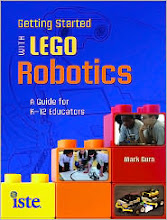"Run for your lives! 'Vampire bat' robot adapts to different terrains by folding its wings so it can walk AND fly
- The robot is called Deployable Air-Land Exploration Robot (Daler)
- It adapts to different terrains, and was inspired by the vampire bat
- Daler features a foldable skeleton mechanism covered in fabric
- This mechanism can be used as both wings and legs, known as ‘whegs’
- Approach has been dubbed by French experts as 'adaptive morphology'
- They hope Daler could be used to fly to the scene of a natural disaster and walk through the rubble to find victims, for example..."
"The future of robots is here - and it hints at a world in which nothing can stand in the way of the mechanical bots.
Called Deployable Air-Land Exploration Robot (Daler), the robot adapts to different terrains and changes shape automatically, so it can instantly switch from walking to flying.
It was inspired by the movement of the vampire bat, Desmodus rotundus, and could one day be used by search-and-rescue teams..."
Read the full article at its source: http://www.dailymail.co.uk/sciencetech/article-2926603/Run-lives-Vampire-bat-robot-adapts-different-terrains-folding-wings-walk-fly.html

 -
- 


